When to tip: America, Europe, Asia, on safari and cruises
Tips are a nightmare for Australian travellers – who should you pay and how much? Read on to find out how to play the gratuities game.

After a dream hiking trip in the Himalayas last month I was brought swiftly back to earth by the tricky issue of tipping. How much was the right amount to repay the efforts of the guide, the lodge staff and others who’d made our days so memorable?
My travelling companion was no help at all. She handballed the responsibility for staff bonuses to me, reasoning that I’d been to India so many times I must know how to navigate such nuanced cultural matters.
She was wrong. Tipping is always a headache. Unless you understand the precise regional etiquette and current economic circumstances of a destination, it’s a stressful task that can sap some of the joy out of travel. Especially for Australians used to tips being a discretionary extra rather than – as is the case in some countries, notably the US – an obligation. The concept of having to hand out compensation whenever someone does their job is as foreign to us as driving on the right.
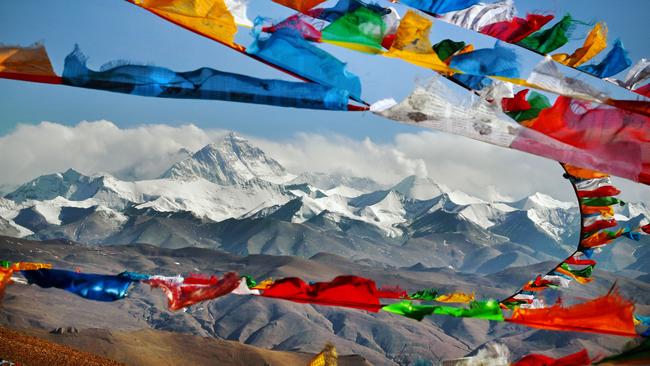
“Tipping culture and etiquette can be confusing for Australians when travelling abroad as it’s not really an established practice for us at home,” Flight Centre travel expert James Spencer says.
Fortunately, my hosts at Shakti Himalaya came to my rescue with recommended tip amounts for the guide and lodge staff. I guessed at a rate for our driver – about $US10 ($15) a day – to thank him for his skilful navigation of the mountain roads. He seemed happy with that. Various other people along the way were also compensated for assisting me.
But it was a relief to arrive at Delhi airport and discover the Indigo Airlines guy helping with my bag wore a blue polo shirt emblazoned with the instructions, “No Tipping”. If only the rules were spelled out so clearly everywhere we go.
EGYPT

“Everybody loves green!” my Egyptian guide assures me when I ask if it’s OK to tip in US dollars. (Local pounds will do at a pinch, but dollar bills are always better.)
On organised tours, particularly premium Nile river cruises, tipping is taken care of for guests, with some exceptions – primarily the guides or program directors, who are often qualified Egyptologists as well as cultural interpreters, historians and all-round fixers. You’ll find them invaluable companions who more than merit a daily bonus of $US10-$20.
The going gratuity rate for Egyptian bus drivers and felucca skippers (on side trips to the Aswan Dam and Nubian villages) is $US1-$US2 a day per guest. Local co-ordinators also receive tips separate from those covered by the cruise. A skilled program director will explain all these protocols in advance.
If taking a camel ride at the Giza pyramids, expect to be hit up for about $US5 on top of what you pay for the ride; the official price is 500 Egyptian pounds ($15). There is no upper limit to customer largesse but if you tip too low they’ll certainly let you know. I tried to give the tiny boy who led my camel – he was no more than six years old – 100 Egyptian pounds but his adult minder scolded me. “Come on, give him real money,” he growled. “Give him US dollars.”

ASIA
Tipping is “very much an acceptable practice” in many parts of Asia, says Sonia Orrego, head of product at Wendy Wu Tours Australia. “However, etiquette can vary significantly across regions and countries, so understanding local customs is an important part of ensuring a seamless and enjoyable travel experience,” she says. Wendy Wu Tours always provides a tipping kitty paid in local currency, to avoid any unpleasantness.
China
As tourism grows in China the Western habit of tipping has gained traction, especially in major cities such as Beijing and Shanghai where the service industry is more international. While still not a widespread custom, expressing thanks for services rendered – whether for porters, tour guides or bartenders – is now generally accepted, Orrego says.
“If dining at high-end restaurants or staying in luxury hotels a small tip for waitstaff, around 10-15 per cent of the bill, is acceptable. As a guide for other individual services, we recommend tipping drivers around 13 yuan ($3) a ride, hotel maids and porters 4-6 yuan a bag and, for local guides, around 37-46 yuan a person is appropriate.”

Vietnam
Tipping is also becoming more regular in Vietnam. Independent travellers wanting to leave an additional sum for outstanding service should consider giving guides about 230,000 Vietnamese dong ($13), drivers about 100,000 dong and hotel staff and porters 30,000 dong each. In upscale restaurants, a modest tip will be welcome.
“If you’re taking a river cruise in the Mekong region, we suggest leaving 100,000 Vietnamese dong per person per day for the crew and the guide who hosted you,” Orrego advises. But most cruises will have their own guidelines on gratuities.
Indonesia
The Indonesian islands don’t have a defined tipping culture, except for heavily touristed Bali. Increasingly, restaurants and hotels there add a service charge of 5-10 per cent to bills. If not, 10 per cent is a respectable tip at better places. In more informal eateries, just round up the bill if you’ve had a fun time. It’s customary to leave villa staff and drivers about 50,000-100,000 Indonesian rupiah ($5-$10) a day. Some villa companies will incorporate a service charge to the rental cost but that needn’t stop you leaving a token of your appreciation. Always hand over money with both hands, as a mark of respect.
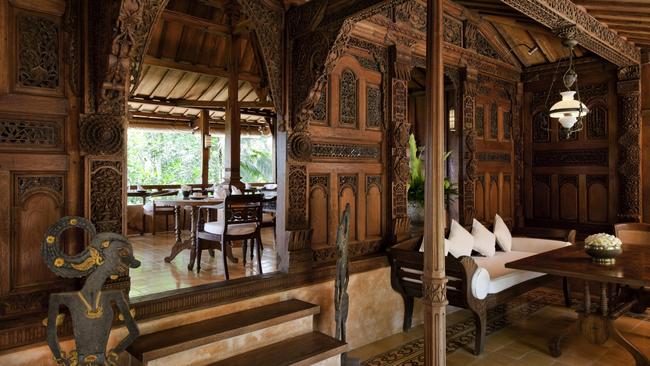
Japan and South Korea
Tipping is not commonplace in either country. Wages are fair and service is considered an honour, so offering a tip can be insulting. Staff at five-star hotels are more used to Western ways so feel free to leave 10-15 per cent in nice restaurants and a few dollars for room service and porters, where warranted.
Thailand
Thailand is more accustomed to tipping, especially in tourist areas, though it’s still not compulsory. In restaurants, it’s fine to leave about 10 per cent of the bill in higher-end venues. In more casual settings tipping is not expected but still appreciated for good service. For guides, drivers and hotel staff, Wendy Wu Tours recommends rates similar to Vietnam.
India

The Indian subcontinent and the countries of the Middle East and northern Africa are a bit exceptional. The concept of baksheesh is embedded in their cultures. It’s a Persian tradition to give money as a tip, a charitable donation or, in some cases, a bribe – a bit like greasing the palm of a New York maitre d’.
Nevertheless, Banyan Tours’ executive director Lucy Davison, who helped organise my recent visit, insists visitors should tip only if they feel it’s deserved. Many luxury hotels have a general tip-box policy, in which case Davison suggests 1000 rupee ($18) a night – “minimum, but if it’s a very high-level service property such as a safari camp, you could go higher.”
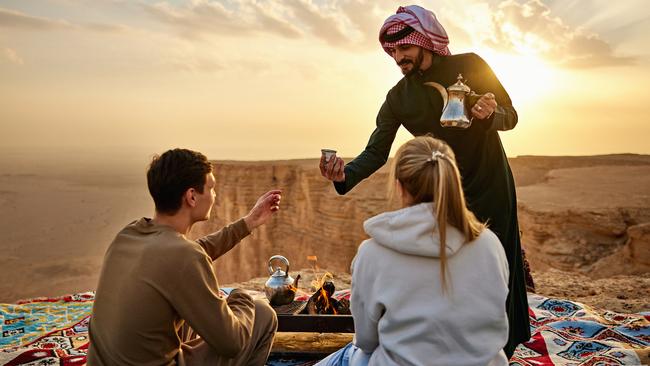
For drivers and guides, 1000-1500 rupee and 2000-2500 rupee a day respectively. At good restaurants, for great service, tip 10-15 per cent of the bill. Hotel porters should get 100 rupee a bag, she suggests, and housekeeping 200-500 rupee a night. I generally just leave whatever notes I have handy.
For auto-rickshaw and taxi drivers, round up the fare. And if you’ve booked one of those fancy Indian airport meet-and-greet services – honestly, you should do it, they’re a godsend – it’s standard to tip about 500 rupee, up to 800 rupee for VIP treatment.
EUROPE
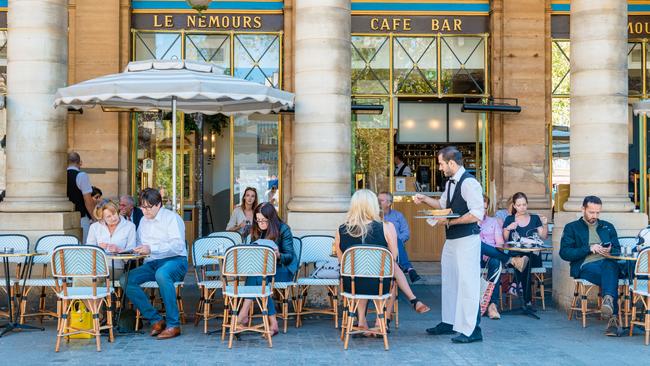
In most European countries it’s OK to round up your restaurant bills or leave 5-10 per cent if the service has been great. Staff are paid decent wages so fringe benefits aren’t part of their employment equation. If tempted to tip, always check the bill beforehand. “Oftentimes the bill already includes a tip to your server,” Spencer cautions. “I’ve experienced this firsthand in Italy, and it is fairly standard across central and Mediterranean Europe.” Look for line items such as service compris, servicio and servizio.
Sonia Jones, managing director at France Vacations, has been travelling to France for 20-plus years, and lived there for two, but says she’s always found tipping an “awkward subject”. When the service is extraordinary she will leave something extra, but she says she’s never felt intimidated when she chose not to.
As a general rule of thumb across the continent, round up taxi fares and cafe bills. Give porters €1-€2 ($1.75-$3.50 per bag). Whether in Europe or elsewhere, cash tips are king. That way you can ensure your money goes directly to those who’ve earned it.
A great guide is invaluable to my work and in Europe and Britain they tend to be highly trained professionals who charge accordingly. I’m happy to pay a premium for their expertise but will always tip as well if I’ve had a great day out and learned a lot about an unfamiliar place. At least €10 or £10 ($20) for a half-day tour, €20 or £20 for a whole day.
francevacations.com.au
NORTH AMERICA
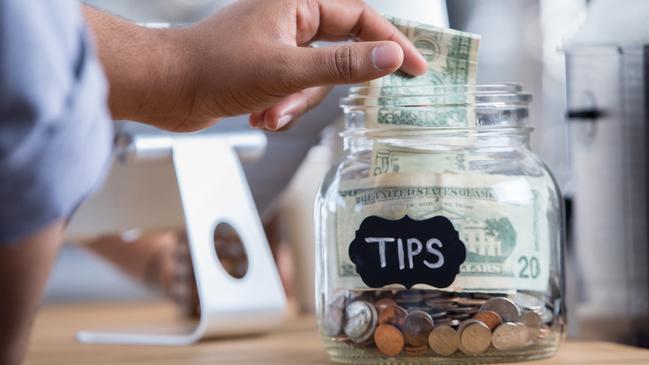
The US is a world leader in the “unpleasant charade” of tipping, says travel industry veteran Trevor Jones of Hawthorn Travel and Cruise. “Although it wasn’t brought over to the US until the 19th century, and was only popularised after the Civil War, instead of being additional compensation on top of a regular wage it functioned as a … solution for employers who did not want to pay recently freed black slaves,” he explains.
These days tips are expected for “almost anything that moves in the sphere of travel in the US”, including taxis, bus and Uber drivers, bellhops, guides, waitstaff and bartenders. Leaving less than 20 per cent at a restaurant in the US is seen as bad form, Jones says.
He says Canada and Mexico have been influenced by their neighbour but not quite as badly. Fifteen per cent is a decent gratuity in Canadian restaurants, and 10 per cent in Mexico. In both Canada and the US, expect to be presented with a payment screen offering a choice of tip amounts, starting at 15 per cent.
BRITAIN AND NORTHERN IRELAND
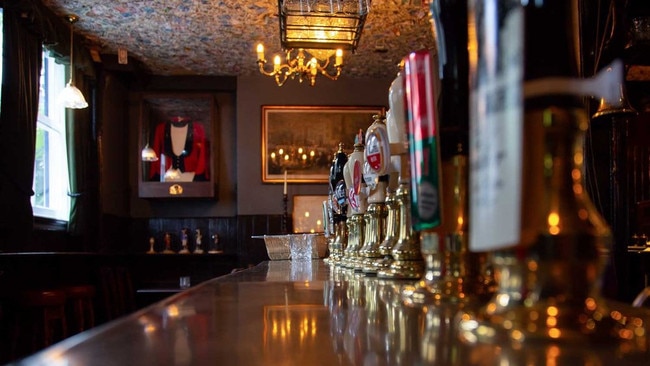
Visit London, the official tourist guide to the British capital, says tipping is “appreciated but not always appropriate in London”. Most mid to high-range restaurants will add a 12.5 per cent service charge to bills. If no service charge is levied, 10-15 per cent is fine. It’s polite to round up taxi fares, and give porters a pound or two per bag. Tipping in bars and pubs is not a thing. Lord knows the drinks are expensive enough already.
CRUISES

Top-tier cruise lines factor tips into the fare so passengers needn’t worry about compensating crew separately, unless they want to. On non-inclusive cruises, expect a service charge tacked on to dining, bar and spa bills – about 18-20 per cent – or a daily gratuity added automatically to your account, usually between $US15 and $US25. If you want to alter that rate, feel free to visit the guest services desk or purser’s office and have an uncomfortable conversation.
AFRICAN SAFARIS

In Africa, tips should always be at the traveller’s discretion, says Niall Anderson, andBeyond’s chief operating officer for African lodges. “The intention should always be to show appreciation and reward excellent service,” Anderson says. “Guests … should never feel as though it is their duty to supplement staff salaries.”
That said, there are expectations at top safari lodges that guests will leave some consideration for good service. Anderson recommends setting aside $US35 daily per couple for camp staff – including porters, who you don’t need to tip separately – and the same for safari guides.
Trackers, who assist guides and guests in spotting wildlife, typically receive around $US25 a day. You can always tip on credit card if you’re worried about carrying large sums of cash.
Rates don’t vary much across the safari belt but bonuses are more likely to be paid in rand in South Africa and US dollars in Botswana and East Africa.
If you love to travel, sign up to our free weekly Travel + Luxury newsletter here.




To join the conversation, please log in. Don't have an account? Register
Join the conversation, you are commenting as Logout